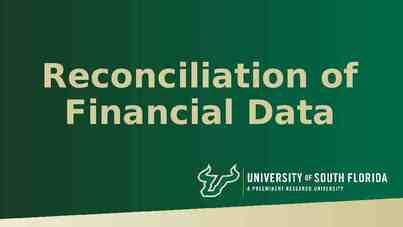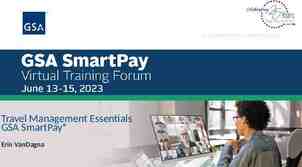Think Twice about Health Literacy: Writing and Editing for a Patient
41 Slides4.01 MB
Think Twice about Health Literacy: Writing and Editing for a Patient Audience ACES 2015: Welcome to Pittsburgh! UPMC Patient Experience Team Connie Feiler, Senior Manager Sarah Kastelic, Communications Specialist
2
Our Record of Success UPMC named to 2014 U.S. News & World Report Honor Roll as one of “America’s Best Hospitals” for the 15th time. Ranked among the top 10 in the nation in six specialty areas. Ranked No. 1 in Pennsylvania and the Pittsburgh Metro Area. 3
Our Past, Our Present, and Our Future 4
Our Session Objectives Participants will be able to: Define health literacy. Identify strategies to enhance health literacy. Create patient friendly written materials. 5
Health Literacy The degree to which individuals have the capacity to obtain, process and understand basic health information and services needed to make appropriate health decisions. (Ratzan and Parker, 2000) Parker, R. (2000). Health literacy: A challenge for American patients and their health care providers. Health Promotion International, 15(4), 277-283. Excellent reference: http://www.cdc.gov/healthliteracy/ 6
How is “Literacy” different than “Health Literacy”? (Source: Maureen Dowd, syndicated columnist NY Times, Pittsburgh Post Gazette, March 16, 2015) 7
What does this say? 8
93 Million Adults have Basic or Below Basic Health Literacy 9
Health Literacy What do we know from a decade of research? Low health literacy leads to: – Lower health knowledge: less healthy behaviors. – Under-utilization of preventive services. – Poorer health outcomes. – Needless patient suffering. – Greater health costs (repeat hospitalizations; overutilization of health services). Specific communication techniques may enhance health literacy. AHRQ, 2004; IOM, 2004; Schwartzberg, 2005 10
Health Literacy– A patient’s ability to obtain, understand and act on health information One method to determine a patient’s health literacy level is by asking the following question: How often do you need to have someone help you when you read instructions, pamphlets or other written material from your doctor or pharmacy?* Patients responding they need help sometimes, often or always indicate a Low Health Literacy (LHL) level. Document “literacy” as a barrier to learning on the admission assessment under Education/Learning Needs. Adapt your teaching strategies by using simple language and use Teach Back to check for understanding. Morris and el., 2006. The Single Item Literacy Screener: Evaluation of a brief instrument to identify limited reading ability; BMC Family Practice, 7:21. 11
Health Literacy—A patient’s ability to obtain, understand and act on health information Use simple “plain language” words that are easier to understand instead of medical terms. 12 Medical Term Plain Language Adverse Bad Analgesic Pain killer Hypertension High Blood Pressure Lipids Fats in the blood
Teach Back “Asking patients to recall and restate what they have been told” is one of 11 top patient safety practices based on strength of scientific evidence. 13
American Medical Association Health Literacy Video Source: American Medical Association 14
Implications for Journalists Use plain language Repeat key messages Summarize 15
Font Type and Size UPMC’s Brand Manual provides font guidelines for all print and web content. Print: – All patient/visitor-facing body text must be sans serif and point size 13 (minimum). Enhances readability for those with lower literacy levels. Enhances readability for elderly patient population. Web: – A work in progress! 16
Print Templates Patient Experience uses print templates for standardization and consistency throughout the health system Templates allow for attention to health literacy and readability Partnership with graphic design team allows us to focus on content creation and editing Our templates include: – – – – – 17 Panel cards Fliers Brochures Booklets Notecards
Font Types 18
Font Types 19
Headlines 20
Graphics 21
Graphics 22
Assessing Readability Everything that we work on, including UPMC.com content, social media posts, and print materials, goes through a thorough health literacy review. Our process includes a mixture of formal and informal techniques: Health Literacy Advisor Eyeballing 23
Health Literacy Innovations Health Literacy Innovations (HLI), a privately-held company founded in 2006, offers plain-language software products and services to help communicators eliminate consumer confusion due to low health literacy. The Health Literacy Advisor (HLA) is a software tool to help assess and improve the readability of documents using plain language principles. The HLA was designed to save time: – Works entirely within Microsoft Word – Has an easy-to-use interactive “readability-checker” – Created for the health care industry, but works great on non-health care documents as well Source: www.healthliteracyinnovations.com 24
Health Literacy Innovations The HLA includes these readability indices: – – – – – – – – – Fry-Based Electronic Readability Formula Precise SMOG Gunning-Fog Automated Readability Index (ARI) Flesch-Kincaid Grade Level Flesch-Kincaid Reading Ease New Dale-Chall Formula FORCAST Readability Formula Coleman-Liau Index Source: www.healthliteracyinnovations.com 25
Fry-Based Electronic Readability Formula The grade reading level is calculated by the average number of sentences and syllables per hundred words. These averages are plotted onto a specific graph; the intersection of the average number of sentences and the average number of syllables determines the reading level of the content. Source: Gunning, T. G. (2003). Building Literacy in the Content Areas. Boston: Allyn & Bacon. 26
Fry Readability Formula The formula and graph are often used to provide a common standard by which the readability of documents can be measured. The Fry formula is preferred in health care because of the wide and varied population of patients. This formula ensures that publications have a readability level that is both understandable and accessible. Source: Gunning, T. G. (2003). Building Literacy in the Content Areas. Boston: Allyn & Bacon. 27
Search and Replace HLA has a built-in lexicon with plain-language alternatives and descriptions for more than 12,000 hard-tounderstand words, phrases, and medical jargon. Operates as a search-andreplace function. Not a perfect science, but does provide alternative options if needed. 28
Eyeballing Our most tried and true scientific tool. Approach each document as if you were writing it for an elementary school class. If you use those hard-tounderstand words, follow them up with an explanation. 29
Assessing for Readability – Walkthrough “Since there is no cure for lymphedema, risk identification and prevention are key. One way to identify risk for lymphedema is to evaluate all patients in the high-risk group before and after surgery. Evaluation is done with standard measurement, and available diagnostic tools, such as bioimpedance (non-invasive method of determining the composition of body tissues to evaluate the presence of body fluids such as lymph), and lymphoscintigraphy (radiological imaging).” 30
Original Reading Level 31
Identifying High-Level Health and Non-Health Terms 32
Long and Complex Sentences 33
What Do We Do Next? To-do list: – Address high level words (both health and non-health terms) Lymphedema Identification Evaluate Standard Measurement Diagnostic Bioimpedance Non-invasive Composition Lymphoscintigraphy – Address long, complex sentences – Re-evaluate the reading level 34
Revised Content – After Health Literacy Review Lymphedema is when your arm or leg swells. This can happen after some cancer treatments because of fluid in your lymph nodes. Lymph nodes help your body to filter cancer cells. It is important to be able to look for signs of lymphedema so that you can tell your doctor right away. There are ways for doctors to tell if you are at risk for this swelling before and after your surgery. They have special tools to see your body tissues and look for this fluid before it builds up in your body. These tools will not hurt you. They simply take images or scan your body for the information. 35
Final Verdict? 36
Plain Language Put to Use One of our doctors offices said that many of their patients were having trouble understanding the urine collection directions. Our team suggested using the colloquial term for urine. Yes, this really happened. Yes, it worked! Feedback is key. 37
Gathering Patient Feedback It is so important to incorporate the voice of the patient/visitor (our consumers) into all relevant materials. We have different methods of gathering patient feedback, including: – – – – – 38 Focus groups Pre-scheduled1:1 interviews Waiting room interviews Phone calls User testing
Gathering Patient Feedback When we conduct patient feedback we ask questions around readability, including: 1.Was the information useful? 2.Was it easy to read and understand? 3.Did the information flow well to fit with your experience? 4.Do you think that any information was missing? 5.Was the font size large enough? 6.Did you have enough room to write? 7.Is there anything you wish you had known that we didn’t provide or explain? 8.Did this information help you get ready for your experience? 9.After reading this information, did you know what was going to happen to you? 39
What’s Next for UPMC Continue to spread the word about health literacy and readability throughout our health system. Offer advice and support to our clinical partners around our goal – to ensure that all patient/visitor materials are reviewed for health literacy and readability. Continue to set the standard for best practices in patient education. 40
Thank You! Any questions? Connie Feiler, RN, MSN Senior Manager, Patient Experience Team Donald D. Wolff, Jr., Center for Quality, Safety, & Innovation at UPMC 412-647-9776 [email protected] Sarah Kastelic, MA Communications Specialist, Patient Experience Team Donald D. Wolff, Jr., Center for Quality, Safety, & Innovation at UPMC 412-864-4452 [email protected] 41














































